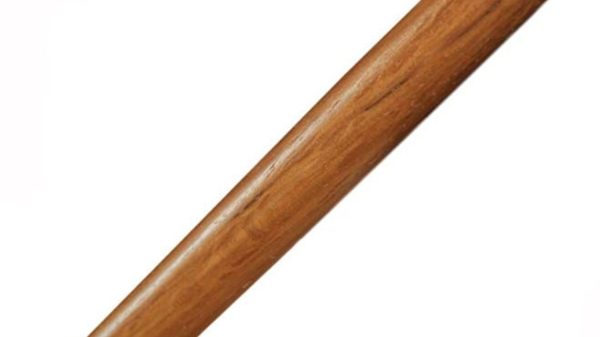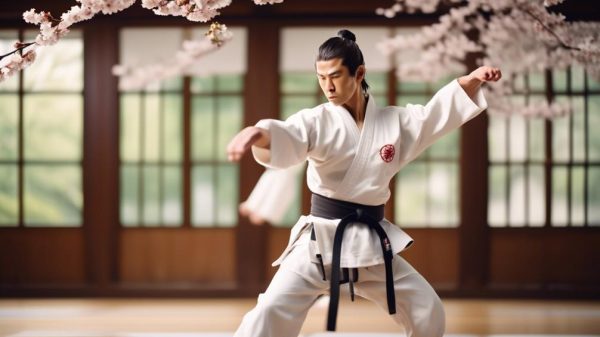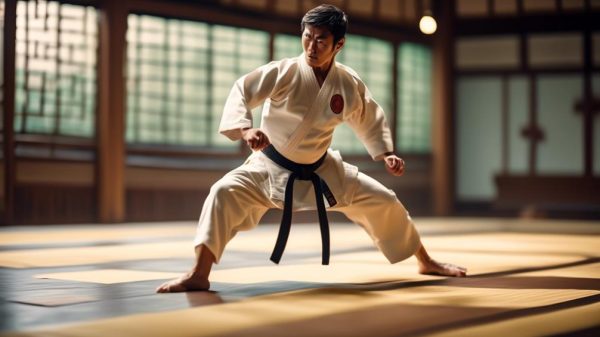Grappling is fighting using locks and holds to defeat foes. Various leg twisting techniques called heel hooks push the body’s biomechanics to the limits when applied fully.
Partners drill heel hook methods starting very slowly for safety. The one executing bends the leg then pivots the foot forcefully for submission or injury in battle.
Mastering control allows using less strength, letting leverage and body position do work. Learning the body’s threshold for torque without tearing tissue takes precision and care.
Banned in some competitions for high danger, countering awareness, precision timing, and avoidance precedes any defense training in case of accidents or misuse.
Origins of the Heel Hook
Tracing back to catch wrestling, the heel hook emerged as a powerful leg lock before establishing its place in Brazilian Jiu-Jitsu lore.
This grappling maneuver quickly became essential for controlling an opponent through joint manipulation. As you explore its history, you’ll recognize the heel hook as testament to the dynamic exchange of techniques across martial arts disciplines.
The heel hook, known for its potential to cause serious injuries, emphasizes the importance of learning proper technique from a trained martial arts instructor.
Its controversial nature arises from the intense pressure it applies to the knee, risking significant damage to ligaments with a misstep in application.
Therefore, mastering the heel hook isn’t just about execution but also understanding the responsibility that comes with wielding such a powerful tool on the mats.
Appreciating the heel hook’s origins allows you to understand its evolution and the respect it commands within the martial arts community.
As you refine your repertoire of techniques, remember that the heel hook is more than just a submission—it’s a piece of grappling heritage, requiring diligence and respect to avoid injuries and honor its storied past.
Anatomy of a Heel Hook
Understanding the intricacies of the heel hook is crucial for precision in application.
By comprehending its mechanics, individuals can effectively isolate and apply pressure to the knee joint, targeting specific ligaments.
It’s equally important to master escapes to ensure safe practice and prevent severe injuries from misapplication.
Heel Hook Mechanics
Understanding the mechanics of a heel hook involves recognizing how it applies torque to the knee joint, potentially compromising ligaments if executed improperly.
In martial arts, this grappling technique is potent yet dangerous. It’s crucial to grasp the nuances of the 50/50 position and ensure precise movements to avoid injury.
Proper technique is paramount to mitigate injuries. Training under a seasoned instructor is essential for mastery, providing guidance on the subtleties of this technique.
Here’s a quick reference guide:
| Key Element | Purpose |
|---|---|
| Controlled Torque | Prevents excessive strain on knee ligaments |
| 50/50 Position | Ensures leverage and stability for the hold |
| Supervised Practice | Reduces risk of injury while learning |
Master the heel hook, but remember, your opponent’s safety is as crucial as your skill development.
Targeted Joint and Ligaments
When examining the anatomy of a heel hook, it’s crucial to understand its impact on the knee joint and the surrounding ligaments.
These components are particularly vulnerable in this submission maneuver, making the heel hook a potent tool in martial arts, especially in disciplines like Brazilian Jiu-Jitsu.
By applying proper technique, the heel hook exerts a twisting force on the knee, which is structurally weaker, potentially compromising ligaments such as the ACL, MCL, and meniscus.
It’s important to note that grappling techniques can be risky and should only be practiced under the guidance of a trained professional to mitigate the risk of injury.
To master the heel hook, it’s essential to seek instruction from a qualified teacher who prioritizes control and safety.
Escaping Heel Hooks Safely
Understanding how to safely escape a heel hook is crucial for maintaining joint health and longevity in martial arts.
This is especially important in disciplines like Brazilian Jiu-Jitsu, where knowledge of the intricate anatomy involved in the 50/50 position is vital.
To prevent injuries and execute escapes safely, it’s essential to practice under the supervision of a qualified instructor and with the cooperation of a training partner.
By developing a mutual understanding of the mechanics and risks involved, practitioners can confidently and precisely execute escapes, prioritizing their well-being as they progress in their martial arts journey.
Legality in Combat Sports
Understanding the rules and regulations governing permissible techniques in combat sports is crucial for ensuring fair play and safety during competition.
In disciplines like Brazilian Jiu-Jitsu, the legality of techniques is a pivotal aspect of both training and competitive matches.
It’s not just about mastering the techniques; it’s also about comprehending the permitted moves within the specified ruleset.
Permissible techniques can vary significantly based on the governing organization and specific style. For instance, in Brazilian Jiu-Jitsu, while joint locks are commonly allowed, certain divisions may restrict the use of heel hooks.
Safety protocols are paramount. Moves such as eye gouging and strikes to the back of the head are universally prohibited to safeguard the well-being of athletes.
Staying informed about these regulations is essential to avoid unexpected setbacks during a match.
Executing proper techniques within the boundaries of these rules is vital for success and demonstrates a profound respect for the integrity of the sport.
Mastery demands not only physical prowess but also a strategic understanding of what’s permissible on the mat.
Heel Hook Variations
Understanding the various heel hook variations is essential for enhancing your grappling skills and expanding your submission techniques.
Each variation offers unique leverage points and control tactics, providing strategic options for securing submissions in competition.
It’s crucial to master these variants to gain a significant edge over opponents who may not be as familiar with these sophisticated maneuvers.
Proper technique and rigorous training are essential for executing these variations effectively and safely. It’s imperative to follow your instructor’s guidance and reinforce muscle memory to react instinctively.
Additionally, in Brazilian Jiu-Jitsu, the 50/50 position plays a pivotal role in applying specific heel hook variations, offering a multitude of attack angles and expanding the submission toolkit.
Mastering these heel hook variations not only elevates your grappling skills but also ensures safety and effectiveness in their application.
It’s a cornerstone for those looking to advance their ground fighting techniques and gain an edge in competition.
Defensive Strategies
Effective Defensive Strategies in Martial Arts
Developing a robust set of defensive strategies is essential for protecting yourself and improving your chances of survival during martial arts practice.
In disciplines like Brazilian Jiu-Jitsu, where techniques such as the heel hook can pose a significant threat, understanding defensive techniques is just as crucial as mastering offensive moves.
Here are key ways to strengthen your defense:
- Control and Maintain Distance
- Keep your limbs close to your body to prevent your opponent from gaining leverage.
- Create barriers and frames using your hands and feet to thwart advancing opponents.
- Anticipate and React
- Sharpen your ability to anticipate your opponent’s movements and preempt their attacks.
- Train your reflexes to swiftly escape or counter when you sense potential danger.
Effective defense involves a dynamic interplay of anticipation and physical response. Each technique must be executed precisely and informed by training under pressure.
It’s important to note that defensive strategies aren’t solely about avoiding submissions; they also involve positioning yourself to gain the upper hand.
Embracing this mindset won’t only help you survive on the mat but also thrive in your martial arts journey.
Training for Safety
Ensuring your martial arts training incorporates safety protocols can significantly reduce the risk of injury, especially when practicing high-risk techniques like heel hooks.
Mastering proper technique is crucial. It’s not just about executing moves; it’s about doing so with precision that safeguards you and your partner.
Remember, the information on these pages is meant only to reinforce knowledge acquired from the supervision of a trained martial arts instructor. In order to use the heel hook effectively and safely, every nuance and adjustment must be supervised. This isn’t a technique to be taken lightly or practiced haphazardly.
Training sessions should always begin with a thorough warm-up, focusing on mobility and gradual engagement of the muscles and joints involved.
When you’re ready to practice the heel hook, do so with a partner who understands the mechanics and the potential risks.
Communication is key—let each other know immediately if something feels off.
Realize that mastery comes from repetition under watchful eyes. Your exercises should be supervised, ensuring that each movement is executed with care.
Used safely, the heel hook is a formidable tool in your arsenal.
But it demands respect for the technique, your partner, and the art itself.
Notable Heel Hook Submissions
The heel hook is a formidable submission that has left a lasting impact on the world of MMA. It has been the defining moment in many fighters’ careers, leading to unforgettable tap-outs.
Let’s take a closer look at some of these memorable instances where skill and timing came together to secure victory through submission.
Iconic Heel Hook Finishes
Delve into the rich history of martial arts, and you’ll discover some of the most iconic heel hook finishes that have made a lasting impact on various fighting styles.
To truly understand these moments, consider the influence of Brazilian Jiu-Jitsu, with practitioners like Rousimar Palhares, who gained notoriety for his adept use of heel hooks, often showcased in the UFC, and Masakazu Imanari, known for the ‘Imanari Roll’ into heel hooks, a technique that has become a staple in submission grappling.
Mastering the heel hook necessitates guidance from a skilled instructor. For informational purposes, let’s examine how the technique unfolds.
Proper positioning and control are paramount, as is precision in isolating the opponent’s leg.
Practice is essential for perfecting the heel hook, and with the use of training equipment and practice mats designed for grappling martial arts, you can refine your technique, minimizing risks and maximizing your tactical edge.
Memorable MMA Submissions
While mastering the heel hook is a key skill, witnessing its application in memorable MMA submissions reveals the move’s true potency in combat.
As a practitioner of martial arts such as Brazilian Jiu-Jitsu and Mixed Martial, you know the importance of the proper technique.
You seek an explanation of the technique that’s both detailed and practical.
| Fighter | Event | Outcome |
|---|---|---|
| Rousimar Palhares | UFC 111 | Submission Win |
| Ken Shamrock | UFC 1 | Submission Win |
| Masakazu Imanari | DEEP 22 Impact | Submission Win |
| Ryan Hall | TUF 22 Finale | Submission Win |
Videos of these iconic moments can serve as a study guide. They illustrate how the technique is used, emphasizing control over kicking power to ensure the proper technique.
Absorb these examples to elevate your grappling arsenal.
The Future of Heel Hooks
The future of heel hooks in martial arts is evolving with a focus on innovative techniques and safer training practices.
For those keen to master the heel hook in disciplines like Brazilian Jiu-Jitsu, it’s essential to consider the following:
- Advancements in Techniques
- Integrating the 5050 position strategically
- Exploring new variations to gain a competitive edge
- Safety and Training
- Developing methods to minimize injury risks during training
- Emphasizing proper instruction and supervised practice
This resource serves for informational purposes, aiming to reinforce and complement your knowledge.
Learning through videos is a helpful tool, but it shouldn’t replace hands-on experience.
As martial arts students, it’s encouraged to experiment under the guidance of experienced practitioners, ensuring that your practice aligns with US regulations for martial arts training.
Embrace this evolution with precision and care. Mastery depends not only on absorbing information but also on safely applying it.
Remember, the future of heel hooks lies in your hands—train smart and train safe.
Why Is the Heel Hook Illegal?
Heel hooks are prohibited in numerous martial arts competitions due to concerns about joint safety.
The technique’s potential to cause severe injury has led to controversy surrounding its use in submissions, resulting in rules prohibiting it to prevent injuries and to address legal debates.
What Part of the Knee Does a Heel Hook Damage?
A heel hook can cause significant damage to the ligaments of the knee, disrupting its mechanics and potentially leading to lengthy recovery periods.
Therefore, it is crucial to prioritize injury prevention and thoroughly understand proper technique to mitigate the risk of such injuries.
What Belt Is Heel Hook Legal?
At advanced levels of belt progression, the heel hook becomes legal, following strict submission guidelines that prioritize safety, injury prevention, and mastery of grappling techniques in both competitive strategies and training drills.
Are Heel Hooks Effective?
Heel hooks are known for their intricate leg entanglement and swift submission speed, making them highly effective in dominating opponents’ defenses.
Mastering heel hook mechanics, grappling versatility, and training safely with smart defense strategies can give you a significant edge in competitions.








